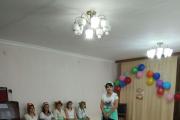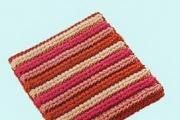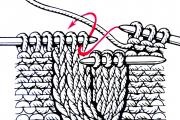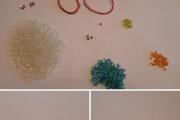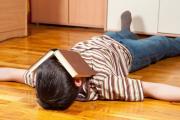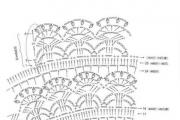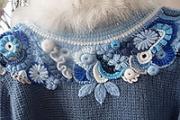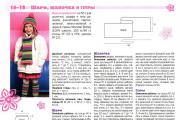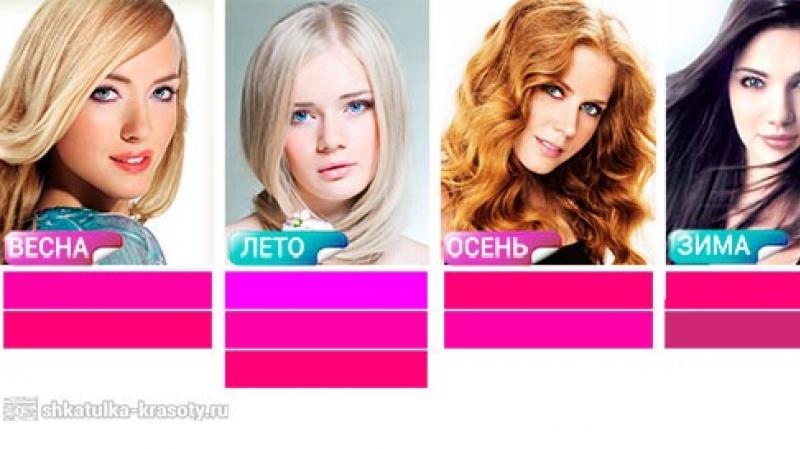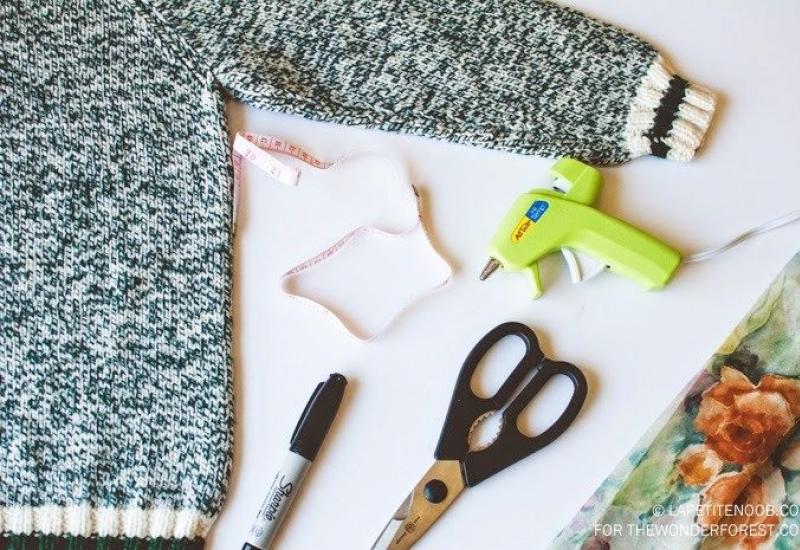The child fell head first on the floor. The child hit the back of his head hard
A child fell out of bed and hit his head: possible injuries
When small children fall, hitting their head is inevitable. What matters is not exactly where he hit when he fell (forehead or back of the head), but the severity of the brain damage.
A child’s body differs in many ways from an adult’s; the bones of the skull are not completely fused until they are one year old (they are easily displaced), and the brain tissue is fragile and immature. All of these factors predispose to more severe brain damage.
All traumatic brain injuries are divided into:
- open (damaged bones and soft tissues)
- closed (when the integrity of the skull bones and soft tissues is not compromised)
Closed brain injuries are divided into:
- concussion
- brain contusion
- compression of the brain
With a concussion, there are no changes in the structure of the brain matter, with a bruise, foci of destruction of the brain matter appear, and compression appears against the background of the bruise due to rupture of blood vessels or fragments of the skull.
If a child falls and hits his head (the back of the head or forehead), there may be a soft tissue bruise - the mildest injury when the brain does not suffer in any way. Then a lump or abrasion occurs at the site of the impact.
Symptoms indicating a brain injury
Concussion manifests itself as a short-term loss of consciousness. In children less than a year old This can be difficult to notice. This condition can be assumed if some time has passed from the moment of the fall to the appearance of crying (1-3 minutes). The child may vomit. Up to 3 months, vomiting may occur repeatedly. There may be pale skin, sweating, as well as drowsiness and refusal to eat. Children under one year of age on the first night after injury.
With a brain injury loss of consciousness may be longer (more than an hour), and signs of respiratory and cardiac problems may appear.
If a child falls out of bed and falls in such a way that skull fracture, his condition may be serious. There may be leakage of cerebrospinal fluid (a light liquid) or blood from the nose or ear. Bruises appear around the eyes (a symptom of glasses). However, symptoms may appear several hours after the injury.
How to assess the severity of an injury if a child falls and hits his head?
 If a child falls from a bed (sofa, changing table or other surface), it is necessary to closely monitor his condition. In the case when everything ends with 10-15 minutes of crying, and the child’s condition has not changed, you don’t need to see a doctor.
If a child falls from a bed (sofa, changing table or other surface), it is necessary to closely monitor his condition. In the case when everything ends with 10-15 minutes of crying, and the child’s condition has not changed, you don’t need to see a doctor.
If the mother has any doubts that the injury is not dangerous, it is better to call a doctor, since it is more reliable to make sure of the child’s health than to treat serious consequences later.
Children under 1.5 years old can have neurosonography. This procedure is painless, inexpensive and performed using an ultrasound machine. It is used to determine the increase intracranial pressure and the presence of life-threatening hemorrhages. At a later age, such a study will not be possible if a large fontanel is overgrown.
A child fell out of bed - first aid
If it appears at the site of the impact, you can apply ice in a napkin or something cold. Magnesia has a resolving effect; lotions with this solution should be done 2 times a day.
If there is bleeding, a cloth in the form of a tampon is applied to the wound. If the bleeding does not stop for more than 15 minutes, you must call ambulance.
If a child falls and hits his forehead or the back of his head, he should not sleep for an hour (this applies to children over a year old), because by the adequacy of his answers and reactions to your questions, you can understand whether the brain has been damaged. You can (and should) wake up and check your coordination at night.
The child must be monitored very closely and cared for for 7 days, if the doctor has given permission to stay at home. The child needs peace and lack of visual stress (this is especially true for children over 1.5-2 years old).
Should I call an ambulance if my child falls and hits his head?
In case of loss of consciousness and heavy bleeding from the wound, it is necessary to urgently call an ambulance. Before her arrival, it is better to lay the baby on his side, especially if there is vomiting (in this position he will not choke).
If a child falls from a great height on his head or back, the spine may be damaged. Then the baby’s position should be changed very carefully to avoid spinal cord injury.
An ambulance should be called if any of the alarming symptoms appear:
- deterioration in health
- the child “falls asleep on the go”, experiences dizziness (this applies to older children)
- spasms or twitching of body muscles
- wide pupils do not narrow in bright light or pupils of different sizes
- severe pallor
- blood in urine, stool, or vomit
- paresis or muscle paralysis
For severe brain injuries, appropriate treatment is prescribed only after a thorough examination of the child.
Prevention of head injuries in children due to falls
 The situation when a child falls from a bed or changing table occurs most often with children under one year old. Therefore, there is no need to leave the baby alone, especially if he has already learned to roll over. It is better to leave the child on the floor (not naked, of course).
The situation when a child falls from a bed or changing table occurs most often with children under one year old. Therefore, there is no need to leave the baby alone, especially if he has already learned to roll over. It is better to leave the child on the floor (not naked, of course).
A changing table is a very dangerous thing, as it has a small area. Therefore, the presence of adults alone is not enough; you need to hold the child with your hand. It is better to swaddle your baby on a bed or sofa.
You can lay down something soft or put pillows on the floor, in case the child will fall from the bed.
Children also “love” to fall out of strollers. Therefore, it is better to purchase lower models and strollers with high sides, do not neglect to secure the child.
Once a child begins to walk, falls and injuries become commonplace for parents. Often, a child hits his head while playing - this can be a collision with an obstacle while running, hitting the corner of a table, falling on the floor or asphalt. Babies also often get bumps and bruises as soon as their mother turns away for a second. As a rule, such situations frighten parents, and they call a doctor in panic. How to determine how badly a child is injured, what to do first and when to sound the alarm - we will consider below.
Inspection of the injured area and first aid to the child after an impact
If a child falls and hits his head, an initial examination should be performed immediately. A hard landing on the asphalt may be accompanied by external damage - scratches, abrasions on the forehead. In this case, they should be treated with hydrogen peroxide. If the skin is not broken, the injury is assessed in stages:
- The lump indicates a bruise of the soft tissues of the head (we recommend reading:). As a rule, in children it disappears within 1-2 hours.
- A hematoma may form at the site of injury - its appearance indicates damage to the blood vessels. However, a bruise can also occur due to a crack in the skull, which is much more dangerous.
- Severe bleeding and a deep wound are a reason to call an ambulance.
After examining the bruise, ice should be applied to the child's forehead. Its pieces should be wrapped in a clean cloth (handkerchief) and pressed against the affected area for 10-15 seconds. Then take a short break (5-10 seconds) and press again. Instead of ice, you can use a chilled spoon, frozen meat or other cold object. The procedure should be carried out within a quarter of an hour. Usually these actions are enough for the lump to disappear, and the hematoma to become smaller and resolve faster.
 After hitting your head, you should briefly apply a cold compress to your forehead.
After hitting your head, you should briefly apply a cold compress to your forehead. Associated symptoms after hitting your head

This article talks about typical ways to solve your issues, but each case is unique! If you want to find out from me how to solve your particular problem, ask your question. It's fast and free!
If the head hit was not too strong, accompanying symptoms may not exist at all. In case of an unsuccessful fall, the following manifestations are possible:
- Redness of the skin.
- Abrasion or wound.
- A lump is a swelling at the site of impact measuring 3-5 cm. A larger size requires the intervention of a specialist.
- Hematoma is a bluish discoloration of the skin caused by damage to blood vessels. A bruise, unlike a bump, does not appear immediately, but within 1-2 hours after the incident.
- Pain at the site of the injury, aggravated by pressure.
- Sometimes, 2-3 days after hitting the forehead, the child develops blue discoloration under the eye above which he received the bump.
What signs should you sound the alarm about?
In addition to examining the site of the injury, you should evaluate general condition child. If the baby bumps into open door and crying - this does not mean that the injury is severe. Children are often frightened by an unexpected blow, so you need to try to calm and distract the baby. However, the consequences of a blow can also be a concussion or a crack in the skull.
 If the blow was severe, the child should be shown to a doctor, so that he, in turn, can assess the severity of the blow and prescribe the necessary treatment.
If the blow was severe, the child should be shown to a doctor, so that he, in turn, can assess the severity of the blow and prescribe the necessary treatment. It is important not to panic, but to pay attention to the following signs:
- Pupils. Their size should be the same; if one is smaller than the other, a concussion occurs.
- Unusual child behavior. If the baby is too lethargic after a fall, begins to yawn, becomes sleepy, or has short-term loss of consciousness, he should definitely be shown to a doctor.
- Another sign of a concussion is nausea and vomiting (more details in the article:). U small child this symptom can manifest itself as regurgitation, it will be caused by eating.
- It is necessary to measure the baby's pulse - it should be within 100 beats per minute, for an infant - 120. Slowing the heartbeat is an alarming signal.
- After your baby hits his forehead, his temperature may rise. This situation also requires contacting a specialist. To rule out a crack in the skull, your doctor may recommend taking an X-ray of the head. The pediatrician will also refer you for consultation to a neurosurgeon and ophthalmologist.
- Some doctors do not advise putting your baby to bed right away, even if it is time for bed. This recommendation is due to the fact that it is easier to observe the child while he is awake in order to notice deviations in his behavior in time. It’s worth trying to distract him from what happened and take a closer look at how the baby behaves.
Treatment of a bump on the forehead
Sometimes a lump on a child’s forehead becomes alarmingly large and does not disappear immediately. It is believed that the frontal bones are one of the strongest, but it is still better to show the child to a specialist in order to avoid consequences.
If the doctor does not find any serious abnormalities in the baby (cracks in the skull or concussion), the large lump can be treated at home. However, it is important to ensure that secondary infection does not occur - suppuration does not form. Let's look at what parents should do and how to cope with the problem on their own.
Ointments and other drugs
In order to speed up tissue regeneration processes, damage to the forehead can be lubricated with ointments and gels that have absorbable and anti-inflammatory properties. Well, if the drug gives an anesthetic effect, then the pain from the bruise it will go faster. Our table contains the most popular and effective means for external use.
| Drug name | Compound | Indications | Recommendations for use |
| Traumeel (gel or ointment) | Homeopathic remedy, contains extracts of yarrow, aconite, mountain arnica, belladonna, etc. | Injuries of various origins (sprains, dislocations, hematomas), inflammatory processes in the joints. | Apply a thin layer to the affected area 1-2 times a day. Use no more than 10 days. |
| Balm Rescuer | Milk lipids, beeswax, oils tea tree, sea buckthorn, lavender, echinacea extract, tocopherol, turpentine. | Abrasions, wounds, diaper rash, hematomas, bruises, sprains, skin infections, inflammatory processes on the mucous membranes. | Apply the balm to cleansed skin. It is advisable to use a bandage with an insulating layer (for example, seal it with a bandage). |
| Gel Troxevasin | The active ingredient is troxerutin. | Swelling and injury, muscle cramps, venous insufficiency. | It is not recommended to apply to mucous membranes. |
| Gel BruiseOFF | Leech extract, pentoxifylline, ethoxydiglycol, etc. | Bruises and bruises on the face or body. | Apply to affected areas up to 5 times a day. Do not use on mucous membranes. |
Folk remedies
 Boiled bay leaves- good aid
Boiled bay leaves- good aid There are also folk remedies to eliminate cones and hematomas. We have selected several recipes that can be used to treat a child:
- Bay leaf. You need to take 2-3 bay leaves and boil them for 5 minutes. Then apply the cooled leaves to the bruise for a few minutes. If the leaves are warm, the effect may occur faster.
- Helps you get rid of a huge lump potato starch. To prepare the product you need to take 2 tbsp. l. starch and dilute it with water to the consistency of thick sour cream. Apply the resulting ointment to the bump and wash it off after a while. Use until completely absorbed.
- Normal laundry soap grate on a fine grater, mix 1 tbsp. l. shavings with egg yolk. Apply the resulting mixture to the bruised area every 2-3 hours. Wash off at the end of the day.
- Apply the inside of a banana peel to the injured area for 5-15 minutes.
- Brush the formation with melted butter. Repeat the procedure every half hour.
- You can apply not ordinary ice to the site of the bruise, but frozen water with the addition of chamomile, string, and sage.
How long does it take for a hematoma to disappear after an impact?
If a child hits his forehead, a lump may appear at the site of the injury, which will resolve within 1-2 hours. However, there are cases when the compaction does not go away for a long time - up to several days or even weeks. Very rarely, complications arise after an injury, and the lump does not go away without the intervention of a surgeon. The doctor may recommend performing a puncture - using a syringe to remove the contents of the tumor. However, first you should try to get rid of the hematoma on your own.
Good day everyone! I propose today to do without long introductions. A head injury in a baby is too serious.
If a child hits his head, what should you pay attention to to prevent trouble from happening? Now I will tell you everything.
Ksenia Remizova, a neurologist and mother of two children, helped me write this article. She shared her own story:
“When my youngest son was 10 months old, he managed to fall out of his high chair. The child was in the kitchen with his dad. The husband turned away for a moment to put a dirty plate in the sink - and at that time the son stood up and fell over the back. He fell head first onto the hard floor. The baby was crying, I was in a panic. We called an ambulance.
By the time we got to the emergency room, my son calmed down. He slept a little, then woke up, looked at the new place with interest, smiled... We hoped that everything had turned out okay. Imagine our horror when the child was diagnosed with a fracture of the parietal bone!
Then there was treatment in the children's neurosurgical department, observation by a neurologist at the clinic... Now my son is almost 3 years old. He has no consequences from the injury."
My child also has a history of injury; at the age of 2.10, he was jumping on the bed and hit my... knee. I myself was in a lot of pain, but the child didn’t even cry. I was limping all day, and I was surprised that my son didn’t even have a bump, and he was cheerful and cheerful.
Unfortunately, the next morning the consequences began - he was losing orientation in space, he could not be moved, he could not focus while looking at me, plus there was vomiting. It was terrible for me, I was very scared, and we were forced to go to the hospital. They diagnosed him with a concussion, and it’s good that everything recovered quite quickly.
From these stories I want to draw your attention to two points:
- Head injuries can be tricky.
- The kids are recovering well. They can endure even severe head injuries without consequences.
Let's look at the dangers of a head injury.
A blow to the head: options for the development of events

Option 1, happy - everything worked out
Let's say a kid, while running, hit a wall. I had a slight headache and it went away. The only memory of the injury is a bump on his forehead.
Option two, concussion
The impact caused the brain cells to stop working normally for some time. Headache does not go away, vomiting may occur. The head is spinning, vomiting is possible.
Option three, brain contusion
The blow was so strong that part of the brain was damaged. The head hurts, the child is vomiting, the head is spinning. Speech or coordination may be impaired.
Option four, the most dangerous - hemorrhage into the cranial cavity
This situation is an emergency. Blood is an additional volume inside a cramped cranium. If it doesn't stop, it can put pressure on the brain. This can lead to death from cardiac or respiratory arrest. Get an ambulance immediately!
Head injury – how to react?

So, the child hit his head hard. What to do in such a situation? The UN formula will help you. Look here:
- Stop the bleeding
- Limit activity
- Observe
Let's look into it thoroughly.
ABOUTturn blood
To do this, apply any frozen food from the freezer to the injury site. The best thing is something loose. This “ice pack” will easily take the shape of your head. Just wrap it in a towel.
Rinse the wound with hydrogen peroxide. Apply a bandage.
Consider this:
A wound wider than 0.7 cm and longer than 2 centimeters requires suturing. You should see a doctor!
ABOUTlimit activity
During the day after the injury, everything is contraindicated for the baby. active games. It’s also better not to watch TV, and not to read books on your own.
Let him lie in bed and listen to audiobooks. You can draw, play board games... You know better what to do with your child.
The day after the injury, do not send the “victim” to school or kindergarten. Let him stay at home, under the supervision of his family.
Now we get to the most important point:
Nobserve

- From what height exactly did the baby fall? When?
- What did he hit?
- Did you lose consciousness?
- Did you vomit, how many times?
- What did you complain about?
- How did you behave after the injury?
Keep an eye on your child for 24 hours after the injury. If he's sleeping, wake him up every three hours, day and night, to make sure he's okay. To do this, ask some basic question and let the baby answer you. Did he answer correctly? Is it normal speech? Let him sleep on.
Keep in mind that it happens that the consequences of a bruise can begin on the second or third day. Therefore, the first three days require your attention to the child’s condition.
Red flags for head injuries

Finally, I will list the symptoms of severe injury, “red flags,” as doctors say.
If you see THIS, call 911 immediately!
- Impaired consciousness. You can't wake up the baby. Or he is inhibited and has difficulty answering questions.
- Change in speech. Slow speech, stuttering. little child stopped talking.
- Marked drowsiness.
- Behavior change. The child is “somehow different” for no apparent reason.
- Headache for more than an hour after injury.
- Vomiting more than once.
- Dizziness for more than an hour after injury.
- Lack of coordination: the child “looks like he’s drunk” and gets carried away.
- Convulsions - twitching of the arms and legs. Or the baby suddenly loses consciousness and “shakes.”
- Weakness in an arm or leg. An adult child limps, cannot walk on tiptoes, and complains of awkwardness in an arm or leg. The baby cannot lean on the handle when crawling, and cannot lift one leg when lying on his back.
- Different pupils.
- Symmetrical bruises under the eyes or behind the ears.
- Colorless or bloody fluid leaks from the nose or ear.
Brr! I wish you not to detect any of these signs in your children.
Dr. Komarovsky once said: “I have not seen a single child who lived to be a year old without falling off the sofa.” Children have had, still have, and will have head injuries. But it is important to correctly assess the situation and consult a doctor in time.
Now you know what to do , if the child hits his head. So as not to lose important information, post the article on social networks. You will always have it at hand - and your friends may also find it useful!
I wish you and your children health, joy - and no injuries!
Hugs,
yours, Anastasia Smolinets.
A child hits his forehead - a big bump is inevitable
Alarming symptoms
There are also some warning signs, having discovered which parents should not hesitate to visit the pediatrician:
- The child cries constantly.
- The child has seizures.
- There is bleeding from the ears and nose.
Symptoms such as these indicate severe brain injury. If you observe any of the above signs, call the children's emergency room. Remember that these symptoms may not appear immediately, but within 24 hours or later after the incident, so do not leave your baby unattended. And for medicinal purposes, the reaction and behavior of the baby after a bruise is more important, and not the bruise itself.
If the lump on the child’s forehead is not from a blow
A child has a lump on his forehead - first aid
Which is hard to even imagine without healthy baby? No movement! And endless jumping and running often end in the same way - with abrasions, bruises and bumps. Usually after a fall all that is required is wet wipe, in order to tidy up the palms and knees, but sometimes the consequences are more serious - a bump appears on the child’s forehead. How dangerous is this? This article will help you make sure everything is okay with your baby. So, we suggest first considering what causes a bump on the forehead, in what cases you need to see a doctor, and how parents can help the baby.
A child hits his forehead - a big bump is inevitable
If a child gets a bump on his forehead, there is nothing wrong with that. As a rule, this phenomenon does not require contact with pediatricians or special treatment and preventive measures. This injury consists of small changes in soft tissue in the area of the bruise. From burst vessels, these tissues fill with blood and turn into a hematoma protruding above the skin. And the largest bumps form on the forehead, because there are many small ones located there. blood vessels. However, parents should not panic, because hitting this part of the head is less dangerous than hitting the temple or the back of the head. This is explained by the fact that the frontal bone is the most durable.
Alarming symptoms
Regardless of whether the child has a bump on his forehead or not, after the injury we recommend showing the baby to a specialist. At a minimum, you should call your doctor and discuss what happened. In the future, it is necessary to monitor the baby very carefully.
Actually, these are the actions you need to start with if a child hits his forehead and gets a big bump. That is, if you see that the baby was just hit hard, but the situation does not pose any danger, then simply apply a cold compress to the site of the injury and continue to observe. Keep in mind that the bruise is more dangerous the younger child. Accordingly, if this infant, there is no need to observe - immediately call a doctor at home for a full medical examination.
There are also some alarming signs that parents should not hesitate to visit a pediatrician if they discover them:
- At the site of the bruise, not a lump, but a depression appeared.
- The child cries constantly.
- The baby started vomiting and felt sick.
- The baby behaves in a way that is unusual for him: he is too calm or, on the contrary, too irritable.
- The child is very weak, his skin turns white or his lips turn blue, he is drowsy and breathes heavily in his sleep.
- The pupils are different in size, the eyes squint.
- The child hit his forehead, and the lump rapidly increases in size.
- The child lost consciousness (even if it only lasted a few seconds).
- The child has seizures.
- The child is disoriented: speaks with difficulty, is inhibited.
- The child cannot move normally and experiences painful sensations when trying to turn/tilt your head and stand up.
- There is bleeding from the ears and nose.
Symptoms such as these indicate severe brain injury. If you observe any of the above signs, call the children's emergency room. Remember that these symptoms may not appear immediately, but within 24 hours or later after the incident, so do not leave your baby unattended. And for medicinal purposes, the reaction and behavior of the baby after a bruise is more important, and not the bruise itself.
If the lump on the child’s forehead is not from a blow
Some parents notice bumps on their children's foreheads and other parts of the body that appear for no apparent reason. Such formations usually do not pose any danger and are associated with the peculiarities of the individual anatomical structure of the skull. In this situation, a bump on a child’s forehead may simply be a hereditary form of the skull and become almost invisible as they grow older.
However, there are cases when the appearance of a lump in the frontal part of the baby’s head is explained as a tumor under the skin. This may be a benign tumor that grows in size over time and does not change its structure. Such formations most often turn out to be wen - atheroma or lipoma, which arise due to blockage sebaceous glands. They differ in growth rates and in the fact that atheroma can fester and become inflamed. Such tumors are removed surgically.
The same benign formations include fibroma, which appears both on the face and on other parts of the body. The causes of fibroids are not completely known, but if they are not too large sizes and they do not interfere with the child, it is not necessary to remove them. However, most bumps are simply the result of a bruise; they pass without a trace.
A child has a lump on his forehead - first aid
If a child hits his forehead and a lump appears at the site of the injury before your eyes, then you can take certain measures and not allow it to “grow” at all. What should I do? As mentioned earlier, it is enough to apply a cold compress to the injured area. The main thing is to apply it tightly and wrap it in cloth to protect the skin from hypothermia. Remember, if a child has a lump on his forehead or the back of his head, then under no circumstances pour cold water on his head! With this action, you are more likely to give your baby a cold, but will not get rid of the lump. Also, cold compresses are not used if the baby is injured skin(wound, torn edges, bleeding). In such cases, it is necessary to disinfect the impact site, or better yet, seek medical help.
If you don’t have anything cold at hand, buy an ointment at the pharmacy (Traumel S, Spasatel, Aibolit, Sinyakoff, etc.), which will relieve swelling. If it is not possible to purchase these medications, then you can use a leaf of burdock or cabbage. Just apply them to the bruise and fix it gauze bandage. The antiseptic and anti-inflammatory properties of these plants will help relieve swelling of the bruise.
Remind once again Parents don’t think that little children need an eye and an eye. Of course, it is better to try to avoid such dangerous situations, but since vigilance has already been lost, and an unpleasant incident has occurred, then just try not to panic or get scared appearance injury received by the child. Calm down, use the tips given in the article and try to explain to your baby the rules of safe games and entertainment.
Often our children fall and we ask the question: “Should we call an ambulance?” Well, I found an interesting article on one of the sites about the signs of traumatic brain injuries and first aid for a child.
Often in a situation where a child falls from a bed or changing table, the mother does not know what to do. Should I run to the doctor, call an ambulance, or help the child myself? It all depends on the severity of the injury, but the most important thing is to calm down and think soberly.
A child fell out of bed and hit his head: possible injuries
When small children fall, hitting their head is inevitable. What matters is not exactly where he hit when he fell (forehead or back of the head), but the severity of the brain damage.
A child’s body differs in many ways from an adult’s; the bones of the skull are not completely fused until they are one year old (they are easily displaced), and the brain tissue is fragile and immature. All of these factors predispose to more severe brain damage.
All traumatic brain injuries are divided into:
- open (damaged bones and soft tissues)
-closed (when the integrity of the skull bones and soft tissues is not compromised)
Closed brain injuries are divided into:
-concussion
- brain contusion
-compression of the brain
With a concussion, there are no changes in the structure of the brain matter, with a bruise, foci of destruction of the brain matter appear, and compression appears against the background of the bruise due to rupture of blood vessels or fragments of the skull.
If a child falls and hits his head (the back of the head or forehead), there may be a soft tissue bruise - the mildest injury when the brain does not suffer in any way. Then a lump or abrasion occurs at the site of the impact.
Symptoms indicating a brain injury
A concussion is manifested by a short-term loss of consciousness. In children under one year old, this can be difficult to notice. This condition can be assumed if some time has passed from the moment of the fall to the appearance of crying (1-3 minutes). The child may vomit. Up to 3 months, vomiting may occur repeatedly. There may be pale skin, sweating, as well as drowsiness and refusal to eat. Children under one year old do not sleep well the first night after injury.
With a brain injury, the loss of consciousness may be longer (more than an hour), and signs of respiratory and cardiac dysfunction may appear.
If a child falls out of bed and falls in such a way that the bones of the skull are fractured, his condition may be serious. There may be leakage of cerebrospinal fluid (a light liquid) or blood from the nose or ear. Bruises appear around the eyes (a symptom of glasses). However, symptoms may appear several hours after the injury.
How to assess the severity of an injury if a child falls and hits his head?
If a child falls from a bed (sofa, changing table or other surface), it is necessary to closely monitor his condition. In the case when everything ends with 10-15 minutes of crying, and the child’s condition has not changed, you don’t need to see a doctor.
If the mother has any doubts that the injury is not dangerous, it is better to call a doctor, since it is more reliable to make sure of the child’s health than to treat serious consequences later.
Children under 1.5 years old can have neurosonography. This procedure is painless, inexpensive and performed using an ultrasound machine. It is used to determine increased intracranial pressure and the presence of life-threatening hemorrhages. At a later age, such a study will not be possible if a large fontanel is overgrown.
A child fell out of bed - first aid
If a lump appears at the site of the impact, you can apply ice in a napkin or something cold. Magnesia has a resolving effect; lotions with this solution should be done 2 times a day.
If there is bleeding, a cloth in the form of a tampon is applied to the wound. If the bleeding does not stop for more than 15 minutes, you must call an ambulance.
If a child falls and hits his forehead or the back of his head, he should not sleep for an hour (this applies to children over one year old), because by the adequacy of his answers and reactions to your questions, you can understand whether the brain has been damaged. You can (and should) wake up and check your coordination at night.
The child must be monitored very closely and cared for for 7 days, if the doctor has given permission to stay at home. The child needs peace and lack of visual stress (this is especially true for children over 1.5-2 years old).
Should I call an ambulance if my child falls and hits his head?
In case of loss of consciousness and severe bleeding from the wound, it is necessary to urgently call an ambulance. Before her arrival, it is better to lay the baby on his side, especially if there is vomiting (in this position he will not choke).
If a child falls from a great height on his head or back, the spine may be damaged. Then the baby’s position should be changed very carefully to avoid spinal cord injury.
An ambulance should be called if any of the alarming symptoms appear:
-deterioration in health
- the child “falls asleep on the go”, experiences dizziness (this applies to older children)
- spasms or twitching of body muscles
- wide pupils do not narrow in bright light or pupils of different sizes
-severe pallor
-blood in urine, stool or vomit
-paresis or paralysis of muscles
For severe brain injuries, appropriate treatment is prescribed only after a thorough examination of the child.
Prevention of head injuries in children due to falls
The situation when a child falls from a bed or changing table occurs most often with children under one year old. Therefore, there is no need to leave the baby alone, especially if he has already learned to roll over. It is better to leave the child on the floor (not naked, of course).
A changing table is a very dangerous thing, as it has a small area. Therefore, the presence of adults alone is not enough; you need to hold the child with your hand. It is better to swaddle your baby on a bed or sofa.
You can lay down something soft or put pillows on the floor, in case the child does fall out of bed.
Children also “love” to fall out of strollers. Therefore, it is better to purchase lower models and strollers with high sides, and do not neglect to fasten the child.
When a child begins to walk, falls occur frequently. This may be due to slippery floors (parquet). Your child can wear socks with rubberized inserts (they will prevent slipping). Rugs and rugs should not “ride” on the floor; they can also cause a fall.
I would also like to note the psychological side of the issue. There is no need to always be afraid that the child will fall and hit his head - after all, exactly what a person is very afraid of happens. In addition, you can pass this fear on to the child himself.

